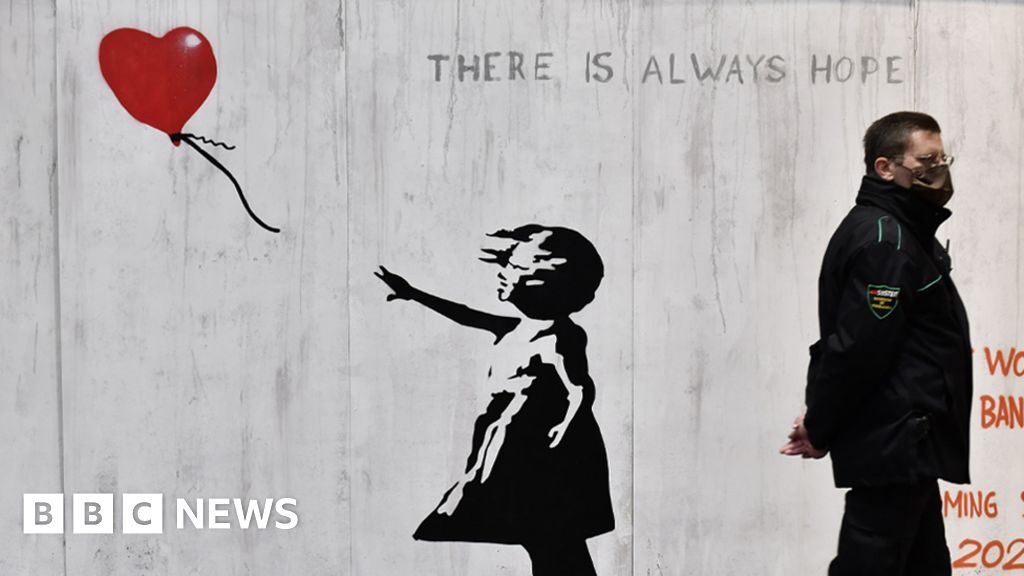- By Noor Nanji
- Culture reporter
Image source, Getty Images
A lost BBC interview with street artist Banksy has been unearthed, more than 20 years since it was recorded.
The recording includes Banksy comparing his approach to art – which involves producing graffiti undercover at speed – to microwaving meals.
“It’s quick,” the Bristol artist said, adding: “I want to get it done and dusted.”
The full interview can be heard on BBC Radio 4’s The Banksy Story, which is available on BBC Sounds.
A bonus episode of the podcast was specially recorded after the interview was discovered.
It is one of the earliest known radio interviews with the artist, who is often described as “mysterious” and “secretive” by the press.
Banksy’s real identity has never been revealed, but the interview gives his fans, which include many A-list celebrities, a rare chance to hear his voice.
The artist – at the time in his 20s – was interviewed by former BBC arts correspondent Nigel Wrench in the summer of 2003, to mark the opening of Banksy’s Turf War show in east London.
An edited version was aired that July on the BBC’s Radio 4 PM programme. However, not all of the material was used.
Many years later, Mr Wrench was listening to The Banksy Story podcast, and this prompted him to recover the full interview on a minidisc in his house.
Image source, Getty Images
Banksy mural Sweeping It Under the Carpet appeared in Camden in 2006
The never-heard-before material includes Banksy’s defence of vandalism as art.
“I’m not here to apologise for it,” he told Mr Wrench. “It’s a quicker way of making your point, right?
“In the same way my mother used to cook Sunday roast every Sunday and says every Sunday, ‘it takes hours to make it, minutes to eat’.”
“And these days she eats microwave meals for one and seems a lot happier. I’m kind of taking that approach to art really. I want to get it done and dusted.”
When pushed on whether graffiti is vandalism and illegal, Banksy had this advice for people:
“Go out! Trash things! Have fun!”, he said, adding that others, in turn, could paint over your work.
“Other people, they can change it. They can get rid of it,” he said.
Shredded artwork
During the interview, Banksy also appears to confirm his first name. When Mr Wrench asked if it was “Robert Banks”, the artist replied: “It’s Robbie.”
Banksy rose to prominence through a series of graffiti pieces that appeared on buildings across the country, marked by their satirical themes.
He’s one of the world’s most famous artists, but despite this he chooses to keep his identity, officially at least, unknown.
Girl With Balloon was originally stencilled on a wall in east London and has been endlessly reproduced, becoming one of Banksy’s best-known images.

James Parker is a UK-based entertainment aficionado who delves into the glitz and glamour of the entertainment industry. From Hollywood to the West End, he offers readers an insider’s perspective on the world of movies, music, and pop culture.








